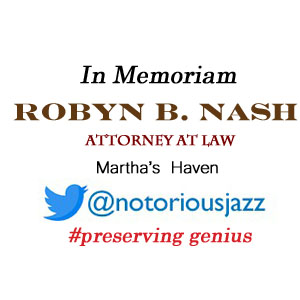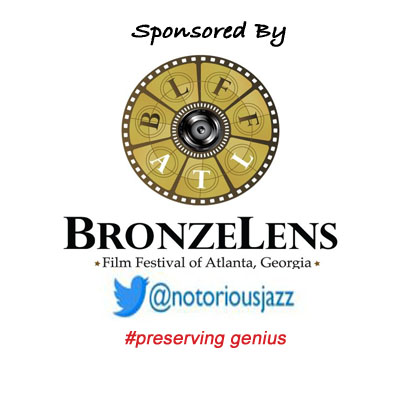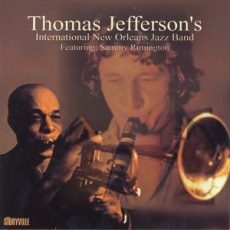
Daily Dose Of Jazz…
Thomas Jefferson was born on June 20, 1920 in Chicago, Illinois. He played drums and French horn while young before switching to trumpet and was strongly influenced by Louis Armstrong. His professional career began when he was 14 playing with Billie and De De Pierce.
He played with Papa Celestin’s orchestra in 1936, as well as with New Orleans jazz musicians Sidney Desvigne and Armand “Jump” Jackson. The 1950s saw him working with Johnny St. Cyr, Santo Pecora, and George Lewis. In 1966, Andrew Morgan recruited Jefferson to play lead trumpet for the Young Tuxedo Brass Band. Subsequently, Jefferson led a jazz band which performed at the New Orleans jazz club Maison Bourbon.
Thomas recorded sparingly as a leader; sessions include dates for Southland Records in the 1960s and Maison Bourbon Records in the 1970s. Jefferson had a cameo as a jazz musician in the 1975 film Hard Times.
Trumpeter Thomas Jefferson, who recorded six albums as a leader and played Dixieland, died in New Orleans, Louisiana on December 13, 1986.
More Posts: bandleader,history,instrumental,jazz,music,trumpet
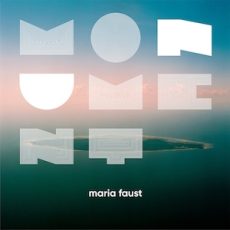
Daily Dose Of Jazz…
Maria Faust was born on April 18, 1979 in Kuressaare,, Estonia. Growing up under the Communist regime she was classically educated, and at the conservatory there, she didn’t feel that there was room for her, musically. Yearning for something different in Tallinn, jazz and improvisational music took hold of her, but in order to develop further, she had to leave the country. With the help of the Danish Cultural Institute, she came to the Southern Danish Music Conservatory. Even in her new surroundings, she felt she did not fit into the world of jazz.
She plays and composes in non-traditional ways, and her big breakthrough came with her album, Sacrum Facere, which is Latin for human sacrifice. It was inspired by the culture of deported orthodox Russians. With collected work songs, hymns, and lullabies she merged the material with classical music and free improvisation. The album received universally positive reviews, and received two Danish Music Awards in 2014 for Jazz Composer of the Year and Jazz Crossover Release of the Year.
She has worked with John Parish and Mark Howard. She tours western Europe, the Balkan Peninsula, South America, China, and Russia. Saxophonist Maria Faust, who has recorded nine albums as a leader, continues to push the boundaries of music.
More Posts: bandleader,bass,cornet,history,instrumental,jazz,music,trombone
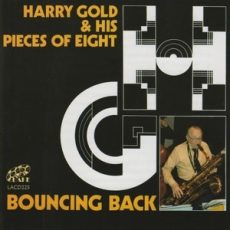
Daily Dose Of Jazz…
Harry Gold, born Hyman Goldberg on February 26, 1907 in Leytonstone, London, England the eldest of six children to a Romanian/Polish heritage. Raised in the East End of London, he decided on a career in music after his father took him to see the Original Dixieland Jazz Band during their famous visit to Britain in 1919–1920.
He studied saxophone, clarinet, oboe and music theory under Louis Kimmel, a professor at the London College of Music. Harry began working professionally as a musician in the early 1920s playing with the Metronomes, Vic Filmer, Geraldo, Ambrose and many other bands. It was, however, his tenure as the star tenor saxophonist with the nationally popular dance band of Roy Fox from 1932 to 1937 that brought him to wide public attention.
In 1937, while working with Oscar Rabin, he formed a band within the Rabin orchestra, performing break sets as “The Pieces of Eight”. This band continued to perform throughout World War II, dodging bombs during the London Blitz and across the country. After the war Harry Gold and his Pieces of Eight became household names in Britain through the late 1940s and 1950s. During this time his Pieces of Eight accompanied the singer and composer Hoagy Carmichael on a well-received tour of the UK.
Gold carried on working into his late 80s and early 90s, playing occasionally. He left an extensive back catalogue of recordings on 78 rpm discs, Formally trained in composition and orchestration, Gold also wrote and arranged music outside of the jazz genre, and most of his career was spent actively in union duties and in efforts to promote the welfare of other musicians.
Dixieland jazz saxophonist and bandleader Harry Gold, whose career spanned almost the whole history of jazz in Britain in the 20th century, died on November 13, 2005.
More Posts: bandleader,history,instrumental,jazz,music,saxophone

Daily Dose Of Jazz…
Frank Assunto was born on January 29, 1932 in New Orleans, Louisiana into a musical family where the trumpeter had two sisters who played piano and woodwinds, and a trombonist brother. They all grew up studying with their father, banjoist Jacob “Papa Jac” Assunto.
He and his brother founded the group Dukes of Dixieland in 1949 and eventually became an institution in the city. Producer and bandleader Horace Heidt took them on tour, and when the group returned to New Orleans they practically took over the Famous Door club.
Dixieland revival peaking in popularity in the 1950s took the Assunto brothers group to national popularity. They toured clubs, released a string of albums and performed on television variety shows. Their first stereo jazz album, recorded in 1958, had one brother on the left channel, the other on the right.
His style was heavily influenced by Louis Armstrong, Bunny Berigan and Bobby Hackett. He also performed vocal duties with the group. Trumpeter Frank Assunto died on February 25, 1974.
More Posts: history,instrumental,jazz,music,trumpet.
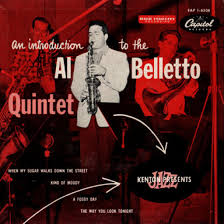
Daily Dose Of Jazz…
Al Belletto was born on January 3, 1928 and raised in New Orleans, Louisiana. He graduated from Warren Easton Charter High School before entering Loyola University New Orleans studying music and then earning a master’s degree from Louisiana State University.
Belletto played with Sharkey Bonano, Louis Prima, Wingy Manone and the Dukes of Dixieland in the 1940s and 1950s. He went on to lead his own band and record several albums on Capitol Records from 1952. Along with his ensemble they became part of Woody Herman’s band for U. S. State Department tours of South America in 1958 and 1959.
In the Sixtiess, Al worked at the New Orleans Playboy Club fronting the house band and serving as Musical/Entertainment Director, booking nationally known acts into the venue.
Saxophonist and clarinetist Al Belletto, who recorded six albums as a leader, died on December 26, 2014 in Metairie, Louisiana.
More Posts: bandleader,clarinet,history,instrumental,jazz,music,saxophone



